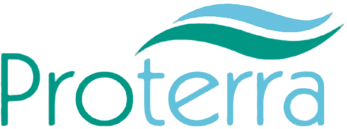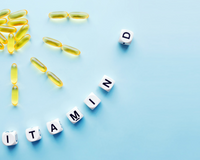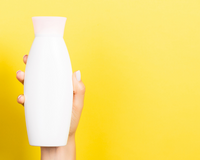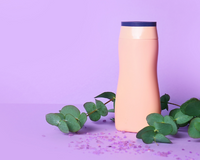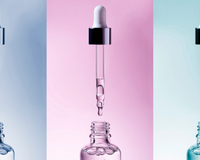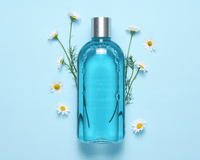Black Owned Hair Care Products For Locs
It's easy to think that if you know how to care for one protective style, you know how to care for them all. However, each protective style has its own process for care. Using black owned hair care products for locs, are a great way to protect natural hair and wear it in different ways. For this hairstyle, pieces of hair are matted and knotted together so that they look like a rope. Even though the style is trendy, there is a lot you should know about how to do it and how to keep it looking good before you start.
There are many ways to care for natural hair locs and keep a crown full of healthy dreadlocks, whether you've been wearing locs for years or just started. Locs need to be moisturized just like any other natural hair, and it's surprisingly easy to do. There are also products for people who like to keep their routines simple. Find out the best products for locs and how to take care of them in the next section.
You have to tuck loose hairs into the dread and lock it to the rest of your hair for dreadlocks. How you take care of your dreadlocks will depend on how old they are and how you started them.
How To Choose Black Owned Hair Care Products For Locs?
Starter locs, also called baby locs, start with twists and coils. If you keep your hair in these styles for longer than the recommended amount of time (3-5 weeks), it will start to lock. Most dreads go through this stage in the first three to six months. When hair gets tangled, this is called budding. People usually get frustrated at this point because there is a lot of frizz and fuzz at this point. To stop it, use a Repairing Sulfate-Free Shampoo with monoi oil, which will help to strengthen and smooth damaged hair, including frizz.
During the teen years, the locs loosen up a lot less. When locs are long enough to hang, they are mature or rooted. Sisterlocks, traditional locs, and freeform locs are all different ways to wear locs. They are similar to micro lots. They are not very big, and the process of putting them in can take a long time. The good thing is that they are easy to style and can go with a lot of different looks. Every four to six weeks, you'll have to tighten your sisterlocks again.
Traditional locs are standard-sized locs that are no bigger than a medium-sized box braid. These kinds of locs don't need much care. Freeform locs are made naturally and don't need much twisting and bending.
How To Take Care Of Dreadlocks?
Now that you know about the different styles of locs, what kind of care do they need? What are the best products for your hair: conditioner, oil, or something else? How often should you wash locs, and what is the best way to dry them? And how are locs styled in different ways?
Which products are best for locs? It's important to decide what you need for a wash day. But what are the best things to use on locs? For growth, light oils and shampoos will work best. Because of the oils and conditioners in creamy shampoos, buildup will happen. In the end, the buildup will stick to your dreads and turn into gunk.
Instead, shampoo for locs should make the hair clean and soft. When choosing a shampoo, the residue is the most important thing to keep in mind. Since locs are locked together, you should use Sulfate-Free Shampoo, which is good for thin or thick hair and doesn't contain PPG or PEG, which tends to leave a residue. When residue is left on locs, it can make them itchy and make it harder for thicker locs to dry and tighten properly. This shampoo will protect against dryness, buildup, and bad smells.
How To Keep Locks Moist?
As with any type or style of hair, the most important part of taking care of locs is to keep your dreads moist. Even though the hair is tied and locked in, dreadlocks can still get dry and break easily if they are not properly hydrated. To keep locs moist, you'll need a good scalp oil.
Even though your hair is tucked away, you will still need to wash it as part of your routine for natural hair care. If you wash, moisturize, and protect your dreads, your hair will stay healthy and grow well. You should wash and detox your hair every two to three weeks to get rid of any products, oil, or dirt that has built up in the strands and on the scalp. Obviously, if you work out a lot, you might want to wash more often than every two to three weeks. Washing will also help bring back the pH balance that healthy growth needs.
Wet the locs and the scalp very well to wash dreadlocks. You'll want your hair to be drenched. Next, put some shampoo in your hands and work it through your hair. You can add more if you need to, but pay more attention to the water than the product. Once the shampoo is on, gently but thoroughly massage the scalp. Then wash it off with a lot of water.
Hair Care Tips For Locs
If you've just washed your locs, you may be wondering what the best way is to dry them. Air drying is the answer. Direct heat can damage dreadlocks, but letting hair air dry will dry it properly and keep it from getting moldy or stinky. But because of how locs are made, it can be hard to dry them and make sure they don't unravel or hold water, especially in the starter stage. As a general rule, you should squeeze your dreads after washing them and use a microfiber towel to soak up some of the water before you style or wrap your hair. Microfiber towels are also great because, unlike cotton towels, they won't leave lint in your locs.
The good news is that each time you wash your dreads, they will dry faster and faster. This makes the style very convenient and a great way to keep mildew away. If you let your dry locs air dry right, they will shine better.
